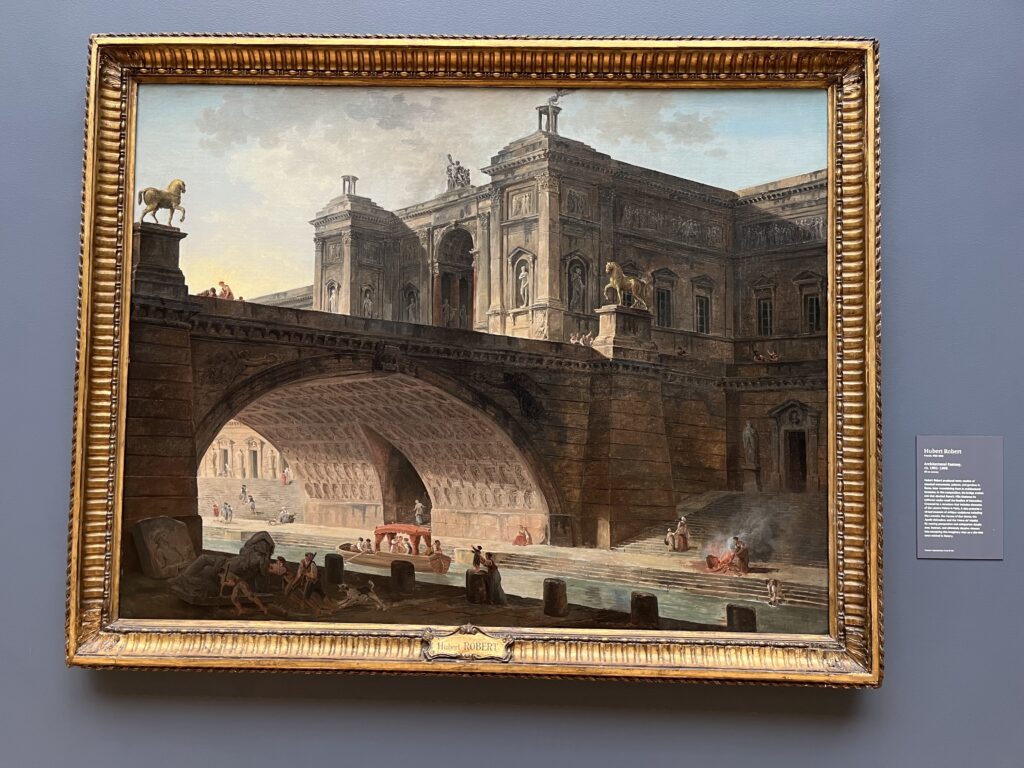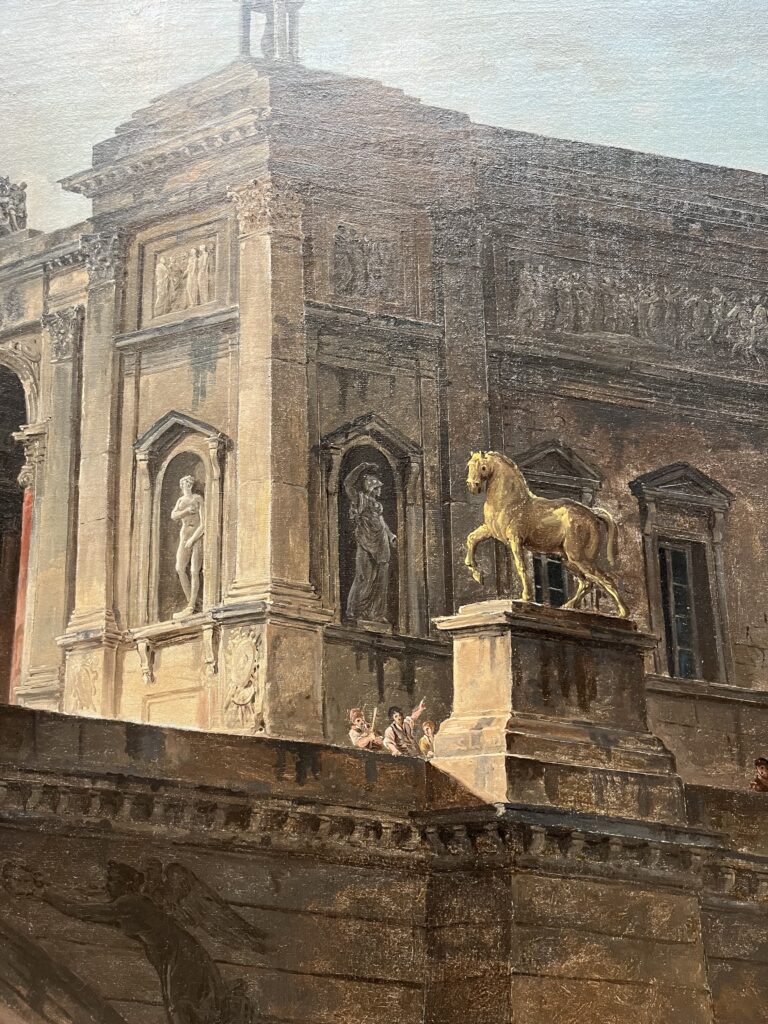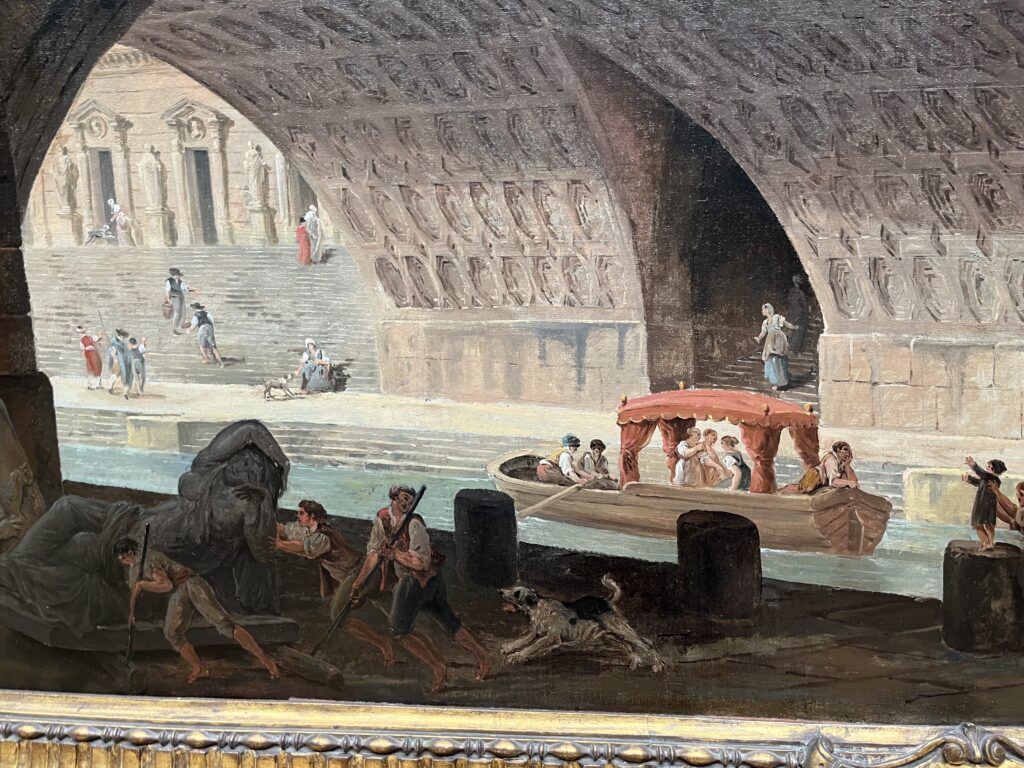Medievalism Through Art: Hubert Robert’s “Architectural Fantasy”
By Emma Walsh

ca. 1802-1808, oil on canvas
Hubert Robert’s painting “Architectural Fantasy” seems, to me, to evoke a sense of medievalism. The painting is almost split in half, with the upper-half focusing on architecture and the lower-half depicting various human subjects. According to the RISD Museum, in “Architectural Fantasy” Robert combines a variety of antique buildings, monuments, and statues to create an imaginary building. When I first saw this painting, the architecture depicted reminded me of A.W.N. Pugin’s principles of architecture. The building’s pointed arches and the inclusion of small statues in alcoves, as well as the towers depicted, reminded me of the Palace of Westminster, which Pugin designed. The architecture is decorative while still remaining functional.
Pugin had an immense influence on the gothic tradition of the nineteenth century and expressed a deep appreciation for the middle ages. While Pugin was British and Robert was French, the two lived during the same time. I wonder if Robert was influenced in the same way that Pugin was and subsequently would have shared Pugin’s appreciation for the middle ages. It seems to me that the architecture depicted in this painting demonstrates an appreciation for medievalism, seeking to preserve through art the beauty and magnitude of old styles of architecture.

While “Architectural Fantasy” seems to show appreciation for certain aspects of medievalism, it also reflects the problematic and undesirable parts — specifically the rigid class system and vast inequality of the time. In the bottom left of the painting, nearly hidden by shadow, are workers straining to move a stone sculpture. This is contrasted directly behind them by the image of carefree upperclass women being paddled down the canal in a boat. This is a clear representation of inequality and the inequitable distribution of wealth and power that existed during the middle ages.

While examining the connotations of this painting I was reminded of the writing of John Ruskin and William Morris, who examined gothic architecture as it relates to society. Ruskin argues that perfection is inhuman and unattainable, claiming that perfection in architecture is a sign of enslavement. He claims that the imperfection and asymmetry in gothic architecture is far more desirable. Similarly, Morris argues for more equity between classes and justice for workers by claiming that art should be made by the people, for the people. He argues against division and disparity between classes, claiming that different classes should not have different aesthetics. Sir Walter Scott, like Morris and Ruskin, examines class structures in his novel Ivanhoe. His depiction of the conquering Normans and the subjugated Saxons, as well as the rigid caste system and elements of slavery, examines the cruelty and inequality that existed in the middle ages. While the novel is an example of medievalism, it does not hesitate to point out the undesirable aspects of the time.
Ultimately, “Architectural Fantasy” depicts aspects of medievalism that have been explored by many other figures through many other mediums over the course of many years. Robert explores all aspects of medievalism, seemingly suggesting that beauty and cruelty can exist simultaneously. He demonstrates both appreciation and condemnation for the time, joining such figures as Pugin, Morris, Ruskin, and Scott in his interpretation of the middle ages. He admires the architecture of the time while acknowledging the inhumane treatment of certain peoples, providing a conscientious portrayal of the time period.





